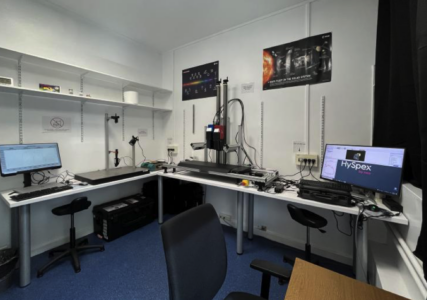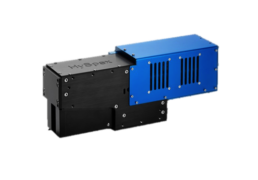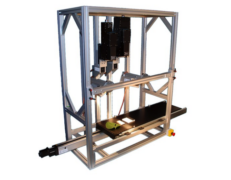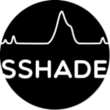Facility manager
Associate researchers

Equipped with a point spectrometer and two hyperspectral cameras spanning the visible near-infrared range (0.4–2.5 µm), the hyperspectral remote sensing laboratory is dedicated to reflectance spectroscopy studies.
Acquired rock and powder spectra are processed with state-of-the-art, dedicated software (ENVI, BREEZE/EVINCE, Mineral Recognizer).
Although these instruments have numerous possible applications, at the CRPG they are mainly used for planetary analogue studies (ground-truthing of remote sensing data in the field, building new reference spectral libraries for Mars and the Moon….).
Two calculation servers and 150 TB of dedicated storage are available for associated data processing and storage.
Equipment

Fieldspec 4 Standard Resolution point spectrometer
Spectral range:
350-2 500 nm
Spectral resolution:
3 nm @ 700 nm
10 nm @ 1 400/2 100 nm

Hyspex VNIR3000-N Hyperspectral camera
Spectral range:
400-1000 nm
Spectral resolution:
2 nm
Spatial resolution:
15 µm/px

Hyspex SWIR640 Hyperspectral camera
Spectral range:
960-2500 nm
Spectral resolution:
4.38 nm
Spatial resolution:
32 µm/px

Laboratory scanning stage
The large rack allows multiple cameras to be used at the same time in the laboratory, at a maximum 1-metre working distance, and supports lamps for sample illumination.

Field setup
Coupled with a rotation stage, our field tripod allows the outdoor scanning of up to two cameras positioned horizontally.
DATA ACCESS
The data produced in the CRPG hyperspectral remote sensing laboratory are published as the open-access spectral library Mirabelle, which is accessible via the free interface S-SHADE: https://www.sshade.eu/db/mirabelle


USE OF THE EQUIPMENT
Please contact the scientific lead jessica.flahaut@univ-lorraine.fr) to arrange collaborative use of the equipment.
RECENT PUBLICATIONS
Flahaut J. et al. (2024), The hyperspectral remote sensing laboratory at CRPG Nancy, France, Mercury Laboratory Analog Workshop, DLR Berlin, Germany.
Peignaux C., J. Flahaut and F. Faure (2024), Spectral properties of synthetic plagioclases as planetary analog materials, Mercury Laboratory Analog Workshop, DLR Berlin, Germany.
Flahaut J. et al. (2024), Origin of Mars feldspathic rocks from remote sensing data analyses and terrestrial analogue studies, JpGU conference, Tokyo, Japan.
Barthez M. et al. (2024) A VNIR spectral database of Mars analog rocks to guide future analyses of hyperspectral data, 9eme Colloque du Groupe Hyperspectral de la SFPT, Rennes, France.
Peignaux C., J. Flahaut , F. Faure (2024) VNIR Spectral Properties of Synthetic Plagioclase as an Analogue to Mars, 55th LPSC, Houston, TX, abstract #1242.
Barthez, M., J. Flahaut, M. Guitreau, G. Ito and R. Pik (2023), Understanding VNIR plagioclase signatures on Mars through petrographic, geochemical and spectral characterization of terrestrial feldspar‐bearing igneous rocks. Journal of Geophysical Research: Planets, doi: 10.1029/2022JE007680.
Ito, G., J. Flahaut, O. González-Maurel, B. Godoy, V. Payet and M. Barthez (2022), Remote sensing survey of Altiplano-Puna Volcanic Complex minerals for planetary analog use. Remote Sensing, 14(9), 2081; https://doi.org/10.3390/rs14092081.
Flahaut J., J.L. Bishop et al. (2021), Fumarolic alteration on Mars: Lessons learned from terrestrial analog fieldwork. GSA annual meeting (hybrid), Portland, Oregon, USA.
Barthez M., J. Flahaut, G. Ito, J. Hernandez-Palacios, N. Liu and R. Pik (2021), Mineralogical composition of terrestrial feldspathic rocks using reflectance spectroscopy data from HySpex hyperspectral cameras. EGU general Assembly, abstract EGU21-11902.
Barthez M., J. Flahaut, G. Ito, M. Guitreau, and R. Pik (2020), Near-infrared laboratory measurements of feldspathic rocks as a reference for hyperspectral Martian remote sensing data interpretation. EuroPlanet Science Congress, abstract EPSC2020-606.
Flahaut J., J. L. Bishop, S. Silvestro, D. Tedesco, I. Daniel and D. Loizeau (2019), Visible Near Infrared reflectance spectroscopy of the Solfatara fumarolic fields (Italy) as an analog for Early Mars. American Mineralogist, 104(11), 1565–1577 ; https://doi.org/10.2138/am-2019-6899.
Flahaut J., M. Martinot, J. L. Bishop, G.R. Davies and N. Potts (2017), Remote sensing and in situ mineralogic survey of the Chilean salars: An analog to Mars evaporate deposits. Icarus, 282, 152–173, https://doi.org/10.1016/j.icarus.2016.09.041.



